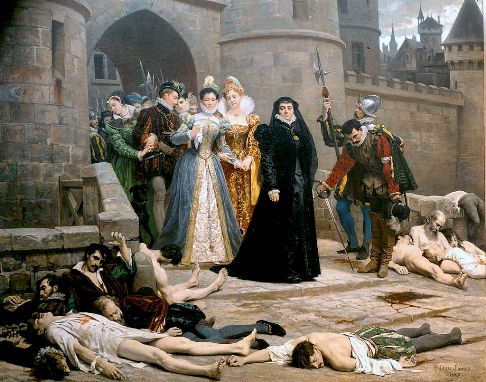On the 24th of August 1572, the sanguineous St. Bartholomew’s Day Massacre was carried out.
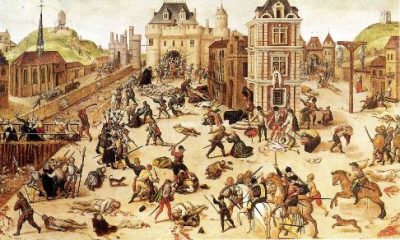
Under the influence of his homicidal mother, Catherine de’ Medici, King Charles IX of France ordered the murder of the Huguenot Protestant leaders in Paris, which triggered a wave of the shocking violence towards the Huguenots in Paris and across France.
Catherine de’ Medici was ruthless in her attempts to protect the throne of France for her sons and to perpetuate the reign of the Valois dynasty. Through intimidation and beneficial political marriages, the Queen Mother tried to use her offspring to solve a plentitude of political and religious problems in France. Catherine kept one of her daughters – young Marguerite de Valois – unmarried, and her actions proved to be forward-looking.
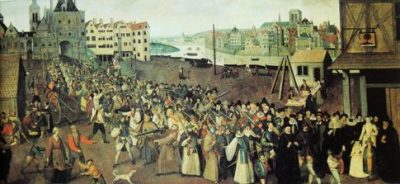
In the beginning of the 1570s, religious wars were tearing France apart, and political rivalries were eroding peace. The first religious war raged from 1562 to 1563; it began with the Massacre of Vassy that occurred on the 1st of March 1562. The second religious war took place between 1567 and 1568; the third war began in 1569 and ended in 1570. All these wars were devastating for both parties, but the Huguenots were granted significant religious freedoms and privileges. Between these wars, the Huguenots and Catholics were embroiled in many skirmishes and massacres.
The history of internecine warfare between the Huguenots and Catholics pushed Catherine to assent to the arranged marriage between Marguerite and her distant cousin, Henri de Bourbon, King of Navarre.
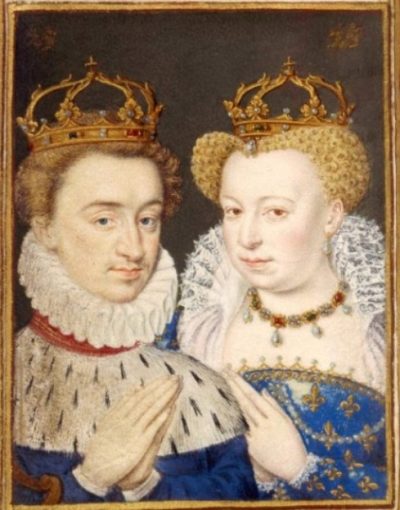
Many notable and powerful Huguenot nobles arrived in Paris on the wedding and festivities on the 18th of August. This matrimony officially served the purpose of establishing peace and religious harmony between the Catholics and Huguenots and, hence, the reunion of family ties between the House of Bourbon and the Valois dynasty. Yet, it was all a ruse to lull the vigilance.
During the week prior to the St. Bartholomew’s Day Massacre, political and religious tensions were running intensely high and, eventually, spiraled out of control. Two days before the bloodbath, Admiral Gaspard de Coligny, a remarkable Huguenot leader, was shot in the street by someone called Maurevert from a house owned by Duke de Guise. It is not known who instigated or sanctioned Maurevert to make an attempt on Admiral de Coligny’s life, but there are three possibilities: the Guises, Catherine de’ Medici, or the Duke of Alba on behalf of King Philip II of Spain.
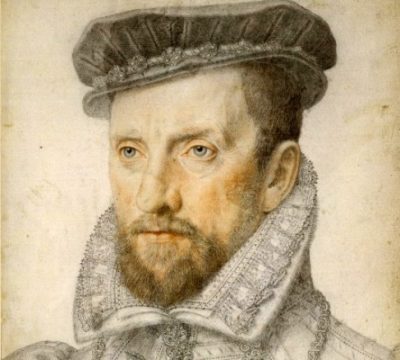
The king sent his own physician to tend to Coligny’s wounds and pledged to investigate the plot against Coligny in order to placate the furious Huguenots, but Catherine prevented all private communication between them.
Marguerite and Henry’s wedding was just the lull before the storm. Crawling to her future victims like a snake in the grass, Catherine told Charles IX that the Huguenots were on the verge of a riot and convinced him that it was necessary to annihilate every Protestant in Paris to keep peace in the kingdom.
That night, the Huguenot blood flowed like rain, and the pungent scent of blood permeated the air. Admiral de Coligny was attacked in his own bedchamber by a group of Catholics under the command of Henry I, Duke of Guise: one of them plunged his sword into Coligny’s chest and then threw the corpse out of a window to his master’s feet.
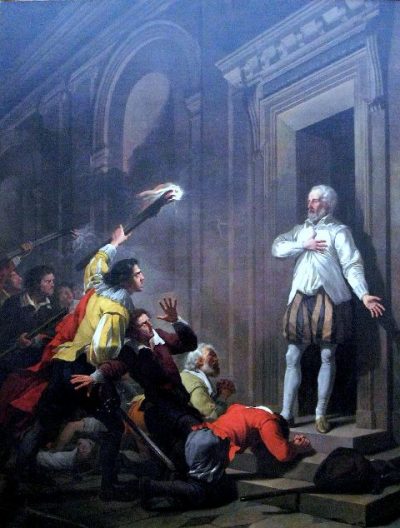
The killing of Coligny unleashed an explosion of the visceral hatred against Protestants throughout the city. Bloodlust seized the hearts of Catholic Parisians who began a general massacre of the Huguenots, including women and children. Chains were used to block streets so as to preclude Protestants from escaping from their houses. The slaughter was merciless and thorough.
The iniquitous massacre in the capital of France lasted for three days when about three thousand Huguenots were killed in Paris and another eight thousand in other provincial cities. The victims didn’t receive a decent burial: the bodies of the dead were collected in wagons and thrown into the Seine.

The two leading Huguenot princes – Henry of Navarre, Marguerite’s husband, and his cousin, the Prince de Condé – were spared as they pledged to convert to Catholicism. On the 26th of August, King Charles and Catherine de’ Medici established the official version of events: the massacre was ordered to thwart a Huguenot plot against the royal family
The famous St. Bartholomew’s Day Massacre started the fourth war of religion, which included Catholic sieges of the cities of Sommières, Sancerre, and La Rochelle. More religious wars broke out in France, and the violence against the Huguenots was increasingly popular. Eventually, the Edict of Nantes tapered off this violence in 1595, granting French Protestants religious freedom.

